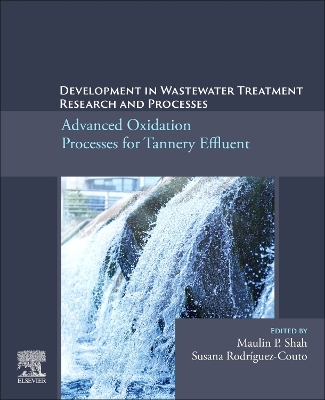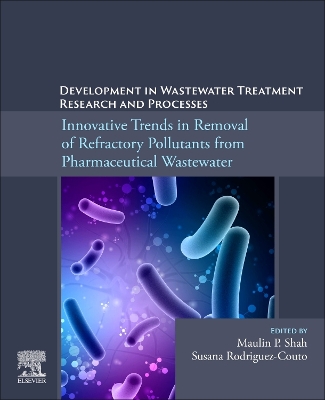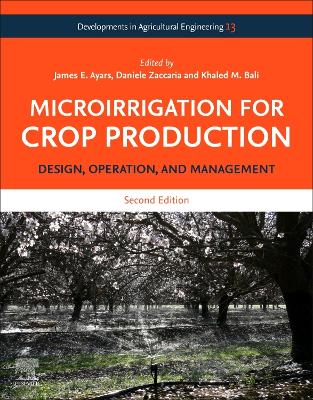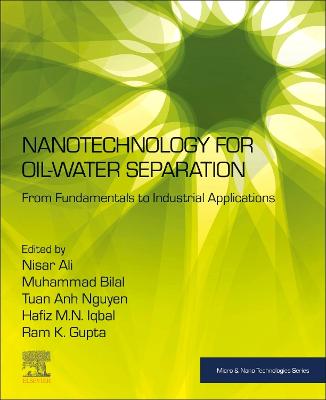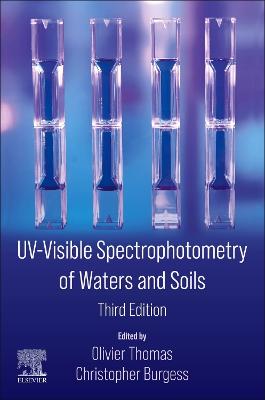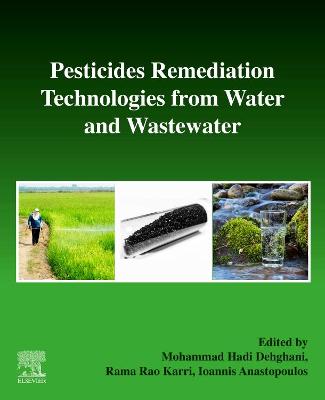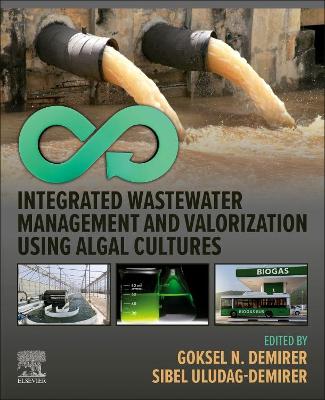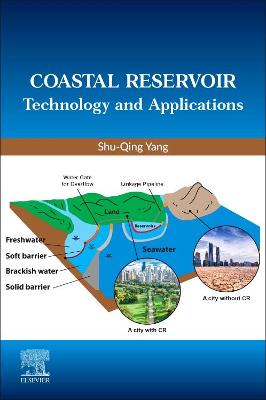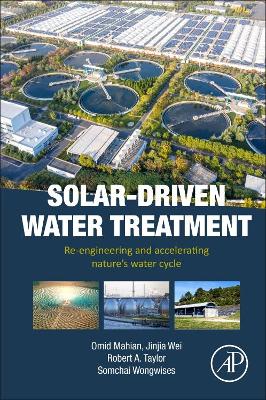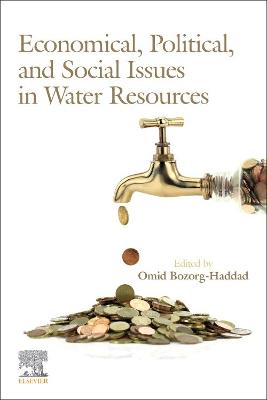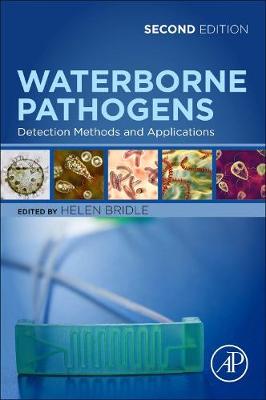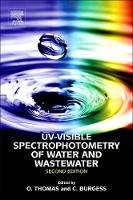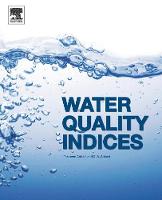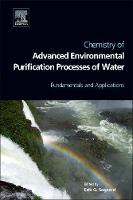Emerging Membrane Technology for Sustainable Water Treatment
 -10%
portes grátis
-10%
portes grátis
Emerging Membrane Technology for Sustainable Water Treatment
Hankins, Nicholas; Singh, Rajindar
Elsevier Science & Technology
03/2016
480
Dura
Inglês
9780444633125
15 a 20 dias
1260
1. Ethical and Sustainable Utilisation of Water: Global Scenarios
and Engineering Responsibilities
W. Richard Bowen
1.1 Introduction
1.2 Global Perspectives
1.3 Global Plans
1.4 Engineering Responsibilities
1.5 Membrane Engineering
References
2. Introduction to Membrane Processes for Water Treatment
Rajindar Singh, Nicholas P. Hankins
2.1 Membrane Materials
2.2 Membrane Separation
2.3 Membrane Processes
2.4 Hybrid Membrane Plants 2.5 Membrane Modules
2.6 Membrane Fouling and Control
2.7 Recent Developments and Future Prospects
References
Section 2: Desalination and Potable Water Puri?cation
3. Forward Osmosis for Sustainable Water Treatment
Li-Cheng Shen, Nicholas P. Hankins
3.1 Introduction
3.2 Draw Solutions
3.3 Membranes and Modules
3.4 Applications of FO
3.5 Conclusions
Acknowledgements
References
4. Desalination by Membrane Distillation
Julio A. Sanmartino, Mohamed Khayet, M.C. Garcia-Payo
4.1 Introduction
4.2 Membrane Distillation
4.3 Properties of Saline Aqueous Solutions
4.4 MD Desalination
4.5 Energy Consumption and Costs of MD Desalination
4.6 Conclusions and Future Perspectives in MD
References
5. Sustainable Energy Systems for Seawater Reverse Osmosis Desalination
Philip A. Davies
5.1 Introduction
5.2 Performance Limits
5.3 Performance and Losses in RO Desalination
5.4 Performance of PV Cells and Losses
5.5 RO Systems for Variable-Power Operation
5.6 Thermally Powered RO Systems
5.7 Conclusions and Outlook
List of Abbreviations
Glossary
References
6. Desalination and On-site Energy for Groundwater Treatment in Developing
Countries Using Fuel Cells
Rajindar Singh
6.1 Background
6.2 India's WatereEnergy Nexus
6.3 FC Technology
6.4 FC Integrated Membrane Desalination
6.5 Zero Liquid Discharge Desalination Processes
6.6 Appropriate Desalination Technology for Remote Regions
6.7 Concluding Remarks
References
7. Ion Exchange Membranes for Water Softening and
High-Recovery Desalination
Malynda A. Cappelle, Thomas A. Davis
7.1 Ion Exchange Materials and Water Softening
7.2 Donnan Dialysis
7.3 ED for Desalination
7.4 Conclusions
List of Acronyms and Abbreviations
Acknowledgements
References
8. Water Treatment by Electromembrane Processes
Nalan Kabay, OEUR zguEURr Arar, Samuel Bunani
8.1 Introduction
8.2 Electrodialysis (ED)
8.3 Electrodeionisation (EDI)
8.4 Capacitive Deionisation (CDI)
8.5 Conclusions and Recommendations
List of Abbreviations
Symbols
Subscripts and Superscripts
Greek Symbols
Acknowledgements
References
Section 3: Wastewater Treatment for Reclamation and Reuse
9. Removal of Emerging Contaminants for Water Reuse by Membrane
Technology
Long D. Nghiem, Takahiro Fujioka
9.1 Introduction
9.2 Membrane Technology for Water Reclamation
9.3 NF/RO Separation
9.4 Other Membrane Processes
9.5 Conclusion
References
10. Surfactant and Polymer-Based Technologies for Water Treatment
Li-Cheng Shen, Nicholas P. Hankins, Rajindar Singh
10.1 Introduction
10.2 Surfactant-Based Technologies for Water Treatment
10.3 Polymer-Based Technologies for Water Treatment
10.4 Combined PolymereSurfactant-Based Technologies for Water Treatment
10.5 Characterisation of Micellar Size
10.6 Conclusions
Acknowledgement
References
11. Submerged and Attached Growth Membrane Bioreactors and Forward
Osmosis Membrane Bioreactors for Wastewater Treatment
Sher Jamal Khan, Nicholas P. Hankins, Li-Cheng Shen
11.1 Introduction
11.2 Biological and Membrane Filtration Processes in MBR
11.3 Membrane Fouling Classi?cation and Mitigation Approaches
11.4 Development of AMBR
11.5 The Forward Osmosis MBR
References
12. Brine Treatment and High Recovery Desalination
J. Gilron
12.1 Introduction
12.2 Energy and Pressure Considerations in High Recovery
12.3 Hybrid Processes to Overcome Salinity Limitations
12.4 Hybrid Processes that Overcome Scaling Problems
12.5 Conclusions
Nomenclature
Greek Symbols
Subscripts
References
Section 4: New Membrane Materials and Applications
13. Development of Hybrid Processes for High Purity Water Production
Rajindar Singh
13.1 Introduction
13.2 Process Technologies
13.3 HPW Applications
13.4 UPW Processes for Advanced Microchips
13.5 Water Reclamation for Reuse
References
14. Biomimetic Membranes for Water Puri?cation and Wastewater Treatment
Chuyang Y. Tang, Zhining Wang, Claus H'elix-Nielsen
14.1 Introduction
14.2 Aquaporins
14.3 Biomimetic Membranes and Their Properties
14.4 Summary and Conclusions
References
15. Novel Graphene Membranes e Theory and Application
Jakob Buchheim, Roman M. Wyss, Chang-Min Kim, Mengmeng Deng, Hyung Gyu Park
15.1 Introduction
15.2 Porous Graphene Fluidics e Mass Transport across Porous Graphene
15.3 Mass Transport across Layered Graphene and Graphene Oxide
15.4 Conclusions
References
16. Nanocomposite and Responsive Membranes for Water Treatment
Sebasti'an Hern'andez, Anthony Saad, Lindell Ormsbee, Dibakar Bhattacharyya
16.1 Introduction
16.2 Responsive Materials
16.3 Nanocomposite Membranes
16.4 Summary
Acknowledgements
References
17. Membrane Fouling, Modelling and Recent Developments for Mitigation
Catalina Alvarado, Kathryn Farris, James Kilduff
17.1 Introduction
17.2 Foulants
17.3 Biological Fouling
17.4 Models for Fouling
17.5 Approaches to Mitigate Fouling
17.6 Concluding Remarks
References
1. Ethical and Sustainable Utilisation of Water: Global Scenarios
and Engineering Responsibilities
W. Richard Bowen
1.1 Introduction
1.2 Global Perspectives
1.3 Global Plans
1.4 Engineering Responsibilities
1.5 Membrane Engineering
References
2. Introduction to Membrane Processes for Water Treatment
Rajindar Singh, Nicholas P. Hankins
2.1 Membrane Materials
2.2 Membrane Separation
2.3 Membrane Processes
2.4 Hybrid Membrane Plants 2.5 Membrane Modules
2.6 Membrane Fouling and Control
2.7 Recent Developments and Future Prospects
References
Section 2: Desalination and Potable Water Puri?cation
3. Forward Osmosis for Sustainable Water Treatment
Li-Cheng Shen, Nicholas P. Hankins
3.1 Introduction
3.2 Draw Solutions
3.3 Membranes and Modules
3.4 Applications of FO
3.5 Conclusions
Acknowledgements
References
4. Desalination by Membrane Distillation
Julio A. Sanmartino, Mohamed Khayet, M.C. Garcia-Payo
4.1 Introduction
4.2 Membrane Distillation
4.3 Properties of Saline Aqueous Solutions
4.4 MD Desalination
4.5 Energy Consumption and Costs of MD Desalination
4.6 Conclusions and Future Perspectives in MD
References
5. Sustainable Energy Systems for Seawater Reverse Osmosis Desalination
Philip A. Davies
5.1 Introduction
5.2 Performance Limits
5.3 Performance and Losses in RO Desalination
5.4 Performance of PV Cells and Losses
5.5 RO Systems for Variable-Power Operation
5.6 Thermally Powered RO Systems
5.7 Conclusions and Outlook
List of Abbreviations
Glossary
References
6. Desalination and On-site Energy for Groundwater Treatment in Developing
Countries Using Fuel Cells
Rajindar Singh
6.1 Background
6.2 India's WatereEnergy Nexus
6.3 FC Technology
6.4 FC Integrated Membrane Desalination
6.5 Zero Liquid Discharge Desalination Processes
6.6 Appropriate Desalination Technology for Remote Regions
6.7 Concluding Remarks
References
7. Ion Exchange Membranes for Water Softening and
High-Recovery Desalination
Malynda A. Cappelle, Thomas A. Davis
7.1 Ion Exchange Materials and Water Softening
7.2 Donnan Dialysis
7.3 ED for Desalination
7.4 Conclusions
List of Acronyms and Abbreviations
Acknowledgements
References
8. Water Treatment by Electromembrane Processes
Nalan Kabay, OEUR zguEURr Arar, Samuel Bunani
8.1 Introduction
8.2 Electrodialysis (ED)
8.3 Electrodeionisation (EDI)
8.4 Capacitive Deionisation (CDI)
8.5 Conclusions and Recommendations
List of Abbreviations
Symbols
Subscripts and Superscripts
Greek Symbols
Acknowledgements
References
Section 3: Wastewater Treatment for Reclamation and Reuse
9. Removal of Emerging Contaminants for Water Reuse by Membrane
Technology
Long D. Nghiem, Takahiro Fujioka
9.1 Introduction
9.2 Membrane Technology for Water Reclamation
9.3 NF/RO Separation
9.4 Other Membrane Processes
9.5 Conclusion
References
10. Surfactant and Polymer-Based Technologies for Water Treatment
Li-Cheng Shen, Nicholas P. Hankins, Rajindar Singh
10.1 Introduction
10.2 Surfactant-Based Technologies for Water Treatment
10.3 Polymer-Based Technologies for Water Treatment
10.4 Combined PolymereSurfactant-Based Technologies for Water Treatment
10.5 Characterisation of Micellar Size
10.6 Conclusions
Acknowledgement
References
11. Submerged and Attached Growth Membrane Bioreactors and Forward
Osmosis Membrane Bioreactors for Wastewater Treatment
Sher Jamal Khan, Nicholas P. Hankins, Li-Cheng Shen
11.1 Introduction
11.2 Biological and Membrane Filtration Processes in MBR
11.3 Membrane Fouling Classi?cation and Mitigation Approaches
11.4 Development of AMBR
11.5 The Forward Osmosis MBR
References
12. Brine Treatment and High Recovery Desalination
J. Gilron
12.1 Introduction
12.2 Energy and Pressure Considerations in High Recovery
12.3 Hybrid Processes to Overcome Salinity Limitations
12.4 Hybrid Processes that Overcome Scaling Problems
12.5 Conclusions
Nomenclature
Greek Symbols
Subscripts
References
Section 4: New Membrane Materials and Applications
13. Development of Hybrid Processes for High Purity Water Production
Rajindar Singh
13.1 Introduction
13.2 Process Technologies
13.3 HPW Applications
13.4 UPW Processes for Advanced Microchips
13.5 Water Reclamation for Reuse
References
14. Biomimetic Membranes for Water Puri?cation and Wastewater Treatment
Chuyang Y. Tang, Zhining Wang, Claus H'elix-Nielsen
14.1 Introduction
14.2 Aquaporins
14.3 Biomimetic Membranes and Their Properties
14.4 Summary and Conclusions
References
15. Novel Graphene Membranes e Theory and Application
Jakob Buchheim, Roman M. Wyss, Chang-Min Kim, Mengmeng Deng, Hyung Gyu Park
15.1 Introduction
15.2 Porous Graphene Fluidics e Mass Transport across Porous Graphene
15.3 Mass Transport across Layered Graphene and Graphene Oxide
15.4 Conclusions
References
16. Nanocomposite and Responsive Membranes for Water Treatment
Sebasti'an Hern'andez, Anthony Saad, Lindell Ormsbee, Dibakar Bhattacharyya
16.1 Introduction
16.2 Responsive Materials
16.3 Nanocomposite Membranes
16.4 Summary
Acknowledgements
References
17. Membrane Fouling, Modelling and Recent Developments for Mitigation
Catalina Alvarado, Kathryn Farris, James Kilduff
17.1 Introduction
17.2 Foulants
17.3 Biological Fouling
17.4 Models for Fouling
17.5 Approaches to Mitigate Fouling
17.6 Concluding Remarks
References


